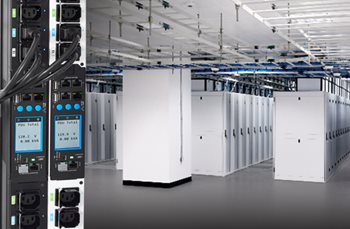Remote Power Control: Critical Capabilities Required on Intelligent PDUs
January 21, 2022
In today’s hyperconnected, “always on” world, there’s no denying the critical need for developing a power management strategy that includes basic control of power for remotely located ICT equipment. This is especially true today, where network deployments at the edge are fast becoming the norm.
As a matter of fact, you’ve probably read or heard about AT&T and Verizon Wireless turning on their C-band 5G networks in early 2022. This news has created quite a bit of excitement, and as many of us know, 5G deployments like this are only going to increase.
 For the IT managers responsible for effective power distribution in the kind of nontraditional and edge sites where 5G lives, intelligent cabinet/rack power distributions units (PDUs) with remote power control offer a simple, cost-effective solution with a generally quick return on investment (ROI).
For the IT managers responsible for effective power distribution in the kind of nontraditional and edge sites where 5G lives, intelligent cabinet/rack power distributions units (PDUs) with remote power control offer a simple, cost-effective solution with a generally quick return on investment (ROI).
When putting together your power management strategy and evaluating intelligent PDUs that support your goals, it’s important to understand the key capabilities required on intelligent PDUs with remote power control. In addition, you’ll want to know what to consider when it comes to remote monitoring and security.
We’ll list a few here to get you started, but be sure to read the linked white paper at the end of this article to get the full list of considerations and capabilities:
- Remote power control at the outlet level is critical. This includes the ability to cycle power to outlets, which can used to affect a remote reboot or ensure power is off at unused outlets.
- Naming of the PDU helps associate the PDU with specific site/location and cabinet/rack
- Naming of the individual outlets helps associate the PDU with specific rack-mount equipment
- Strong network security (including HTTPs support with the ability to upload a custom certificate and support for SNMPv3 for third-party software integration)
- Strong user authentication, including integration with enterprise authentication services such as RADIUS and LDAP and separate levels of permission for PDU management versus power/outlet control
- Use of bistable relays that minimize the power consumption of intelligent PDUs with remote power control during normal operation. They also allow the individual outlets to maintain their state after a power event
While the list above will help get you started, there’s plenty more to consider. And as you’re working to optimize your operations through remote management, be sure to read, “Remote Management of Data Center Cabinets: The Importance of Remote Power Control in Multitenant/Colocation, Laboratory and Remote/Edge Sites,” and learn more about the benefits of intelligent PDUs.
Read the white paper and bookmark it, too.
Posted by Brittany Mangan, Digital Content Specialist at 1/21/2022 11:48:51 AM